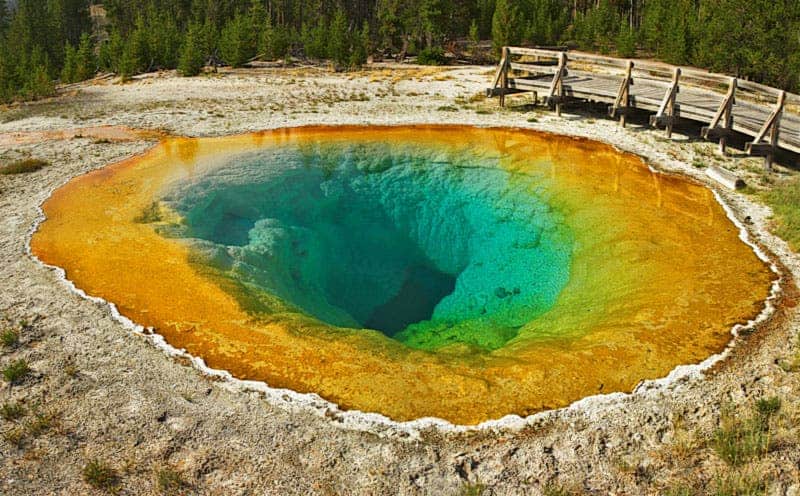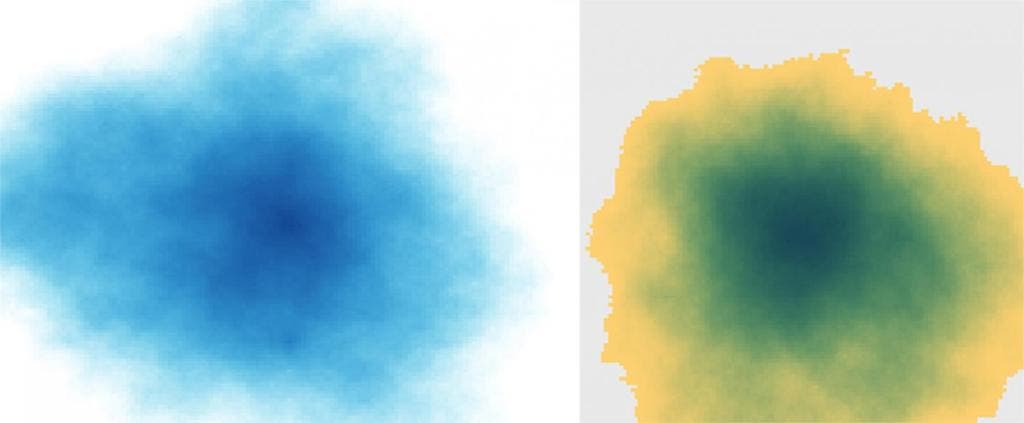The bright, rainbow-colored thermal pools of Yellowstone park may owe their spectacular color to tourist pollution, a new study suggests. Using mathematical models, the study showed the initial colors of the ponds – the ones they had before tourists started polluting them.

The Morning Glory pool was blue 200 years ago, a new model shows. Image credits: Charles Kozierok
Morning Glory Pool is a hot spring in the Upper Geyser Basin of Yellowstone National Park. Its distinct colors attract millions of tourists each year; the colors come from the bacteria which inhabit the water, creating layered mats that change the water’s color. Scientists say that because tourists threw make-a-wish coins, thrash and rocks into the pond, its chemistry changed, allowing the bacteria to thrive and leading to the colors we see today.
Researchers from Montana State University and Germany’s Brandenburg University of Applied Sciences explained their model in a study published Friday by the journal Applied Optics.
“We didn’t start this project as experts on thermal pools. We started this project as experts on optical phenomena and imaging, and so we had a lot to learn. There are people at my university who are world experts in the biological side of what’s going on in the pools. They’re looking for ways to monitor changes in the biology – when the biology changes, that causes color changes – so we’re actually looking at possibilities of collaborating in the future,” said Joseph Shaw, co-author of the study.

(Photo : Nugent, Shaw, and Vollmer) These are historic and current simulations of Morning Glory Pool, using bare rock and pure water of varying depth for the historic image and a uniform orange microbial mat and pure water of varying depth for the current image.
Using data gathered by DSLRs and long-wave infrared thermal imaging cameras, along with spectrometers, the scientists were able to determine how the chemical reactions are changing the color of the water, and reverse engineer the process to find out how the water would have looked like in the past, before humans started interfering. The Morning Glory Pool, for instance, had a very deep color of blue.
The pool’s center is still deep blue, due to the way the light is diffracted by the water. The fact that researchers were able to figure this out using a relatively simple mathematical model is even more remarkable.
“What we were able to show is that you really don’t have to get terribly complex — you can explain some very beautiful things with relatively simple models.”
So, what do you think? Is this a rare case of pollution doing good and turning a relatively mundane pond into something very special? Or is it just yet another case of humans ruining something natural and beautiful









